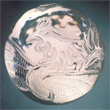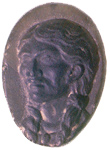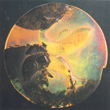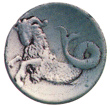|
|||||||||||||||||||||
|
||||||||||||
|
||||||||||||
|
|
|||||||||||
| Pliny in his masterpiece "Naturalis Historia" explains that gems exist to be engraved and not for simple decorative purpose. Infact, the engraving of gems gives rise to a historical process that individualizes it in the true sense of the word. A gem with a family crest has the right to enter that family's property, its tradition, history and life. Everybody knows that in Rome at the Niro's time the powerful that fell out of favour had only few alternative for suicide. A required step of this sad rite was that of breaking their seal. Now, only few seal are used, but a signature on a sealing wax seal, with the raised engraved image on it, has still a particular attraction. In the ancient times, cylindrical seal were commonly used. By rolling a small hollow cylinder with a negative engraved relief, a trail on the wax band was left. The most diffused were mythological, religious, allegoric engravings or those reproducing a face or a writing. This particular expression of the figurative art, very similar to miniature, leads one to consider small things that can be seen without the magnifying glass. This requires a mood and a spiritual attitude very different from that of the figurative arts that requires largest horizons. When observing a miniature, a seal, a small engraving, one should feel immediately in an introspective mood; but the atmosphere one lives is quite sad because the shadow of the passing time, that maintains only the engraving of the gem, brings back to mind the human transience. There is a civilization that doesn't express itself through images. Some religious reasons forbids the Muslims to represent human faces and figures or representative aspects of gods; for this reason they transferred their great expressive power in architecture and handwriting. And what is better then engraving the various steps of the Koran on gems? In the western world a certain effort has been made to work out sophisticated monograms, but from this point of view none can compete with the Muslim civilizations. Engravings on gems must not be confused with shell cameos or workmanships of organic substances such as coral, ivory, bone, tortoise and others. Such workmanships, though made with a certain skills following the earliest tradition of the gems working process do not have the characteristic "durability" of gems, so they are not included in our research. Engraving can be made in high-relief or in bas- relief (namely, in "positive" or in "negative"). Generally, the high-reliel (positive) is made to be seen as it is, while the bas-relief (negative) is used to give a positive image on a sealing wax seal or sornething like this. In this last example, the image will be upside-down and possibile initials or abbreviations are read backwards. Then there is a certain kind of workmanship used for clerical rings in which the outside surface is bright (smooth or cabochon) and the inside has an engraved image which can be seen against the light. This is a kind of fine decorative virtuosity that must consider also the anamorphic deformity of the lenticular surface. The family crests were a privilege of the past aristocracy; today, they are used only for pure aesthetic habit, so that those who have no crest, can invent it and make it engraving on a fine gem without spending too much. Among other things, in Italy, there are good engravers so an engraved stone becomes a whim that is worth to satisfy. The idead thing would be take a very hard stone with a minimum of trasparence. Blue sky or yellow sapphires with flat curts represent stones that can be well emphasized by an engraving on tablet; their hardness preserve them from wear for many generations. |
||||||||||||
|
|
|||||||||||






